“Pode subir!” You can go up! That’s the Portuguese command from one climber to another when the belay is ready and the climber can climb. So when André yelled it to me, I climbed…
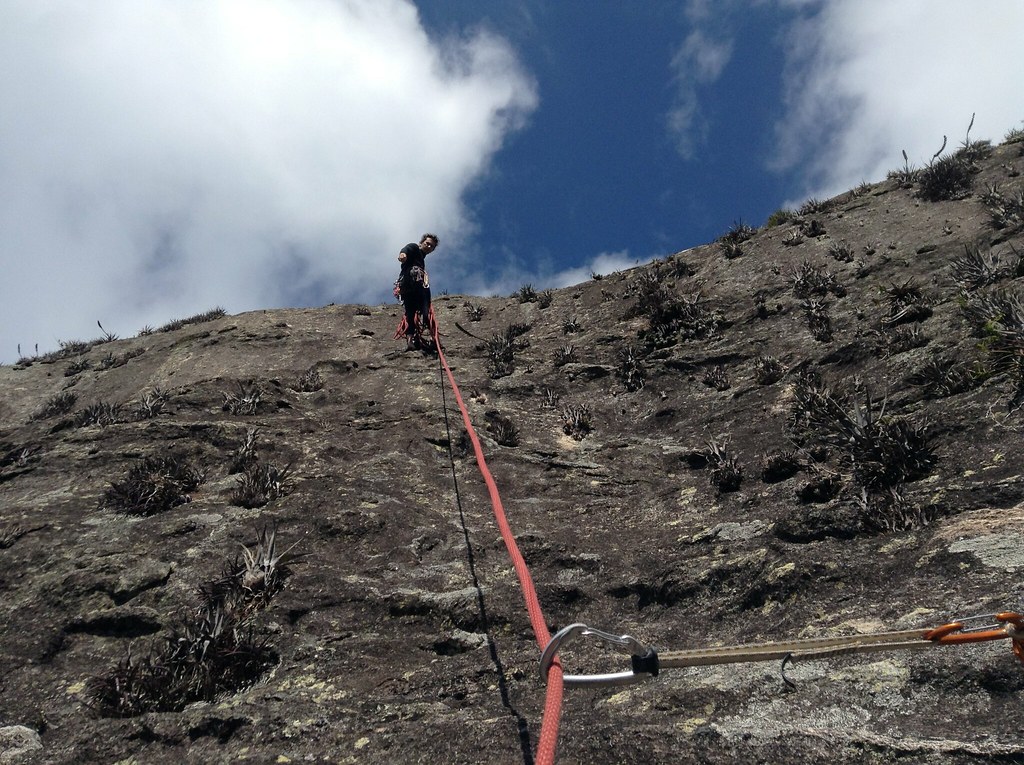
Here we are climbing Pico Tijuca, which at 1,021 meters (3,349 feet) is the tallest peak in the city of Rio de Janeiro — and notably colder and windier than at sea level where we started out that morning. It’s one of the older climbing routes in the city, and very typical of a Rio climb in not requiring arm strength so much as balance and toe strength. It’s not difficult, at 5.7/5.8 over the four pitches totalling about 200 meters (650 feet), but it’s very exposed with long distances between bolts and frightening fall potential.
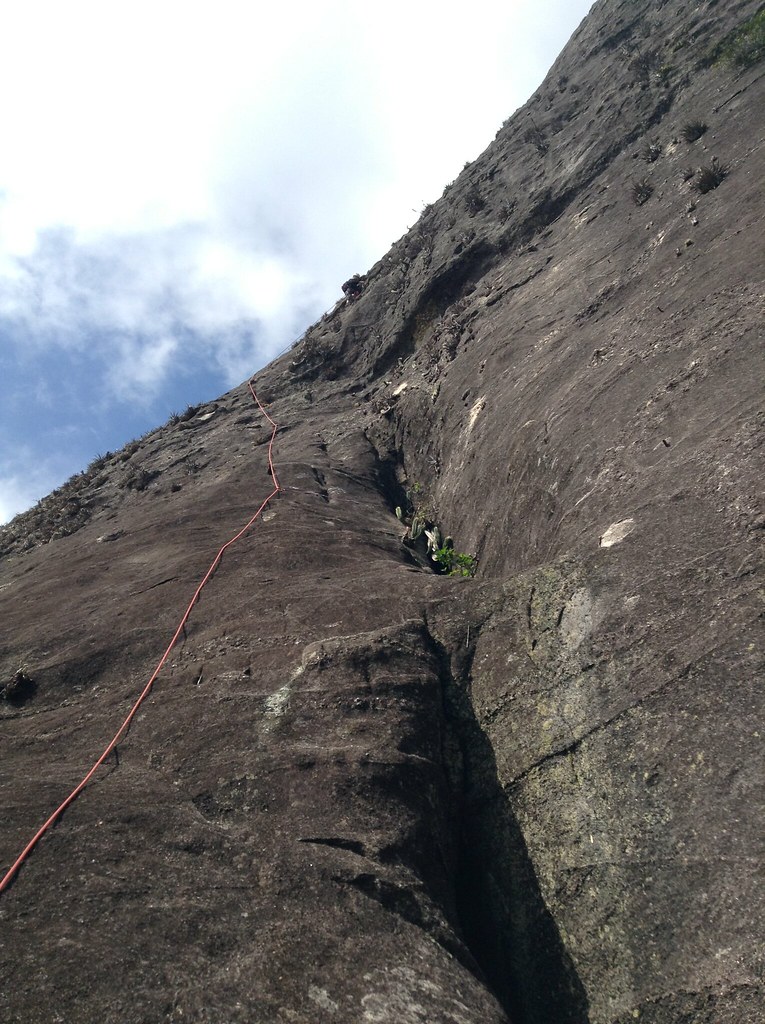
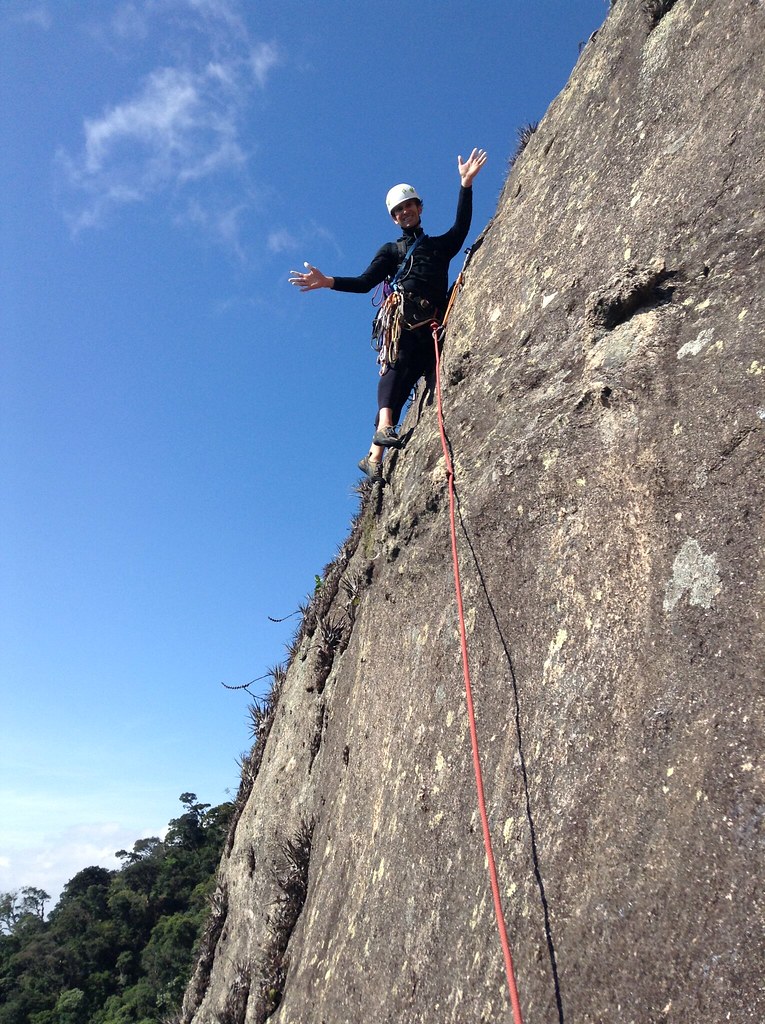

From the peak, you have a spectacular view of Rio and can really get a sense of how much of the city has been preserved as urban forest. In the below photo, I’m looking out toward the mountain Pedra da Gavea. In the upper right part of the photo you can see the beachside homes of Barra da Tijuca, which is the area of the city for the main Olympics venues. Incredibly, a new metro line starts from those houses and tunnels leftward through the mountains for 5 kilometers (3.1 miles) to the next station — making it the world’s longest subway tunnel.

Aside from Pico Tijuca, I’ve been climbing a few times on Morro Cantagalo, a hill that rises up from beside a lake in the south zone of Ipanema where Olympic rowing events are to be held. Cantagalo is also the name of the favela that sits on the other side of the hill, an area formerly controlled by drug gangs and totally inaccessible to police or any other government security. Because of that, I’ve been told that climbing here was in the past somewhat dicey.
Below, André is rappelling down Cantagalo after we completed a three-pitch climb.
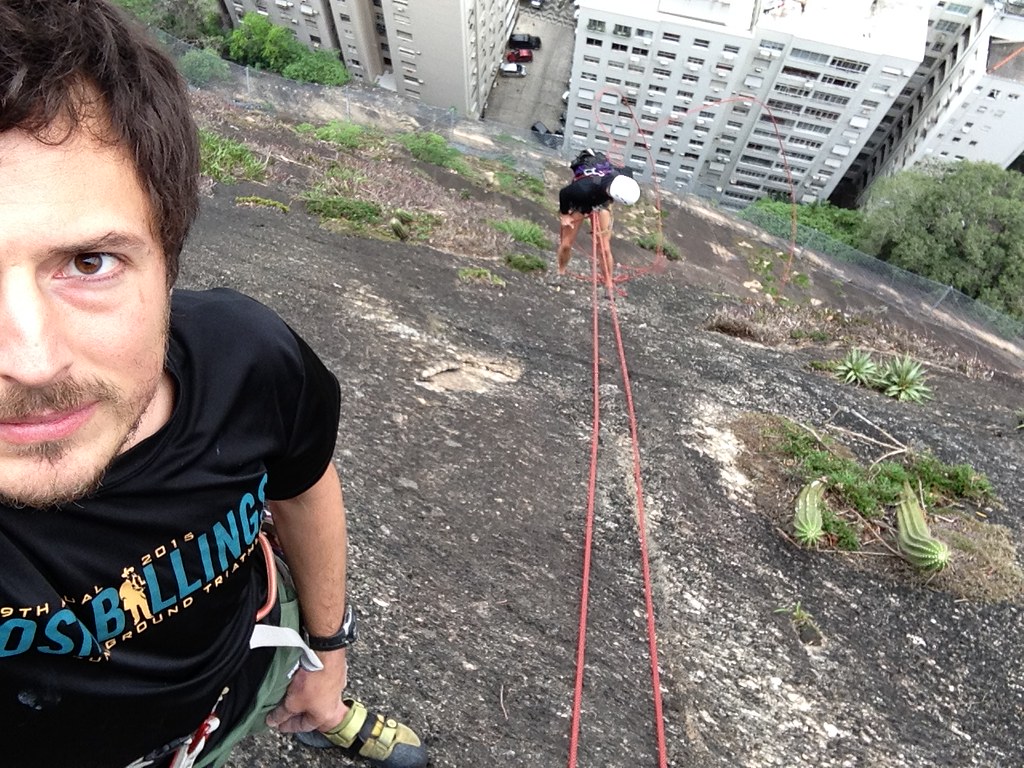
Aside from climbing, the hiking is also good during these cooler and drier “winter” months in the southern hemisphere.
Here are a few shots from the top of Morro Dois Irmãos (elev. 533 meters/1,750 feet), which is a pretty serious elevation gain when starting at the beach. The summit is about a 45-minute run/jog/slog from where I’m living in Leblon. On nice days there’s a crowd of people sunbathing on the summit rocks.
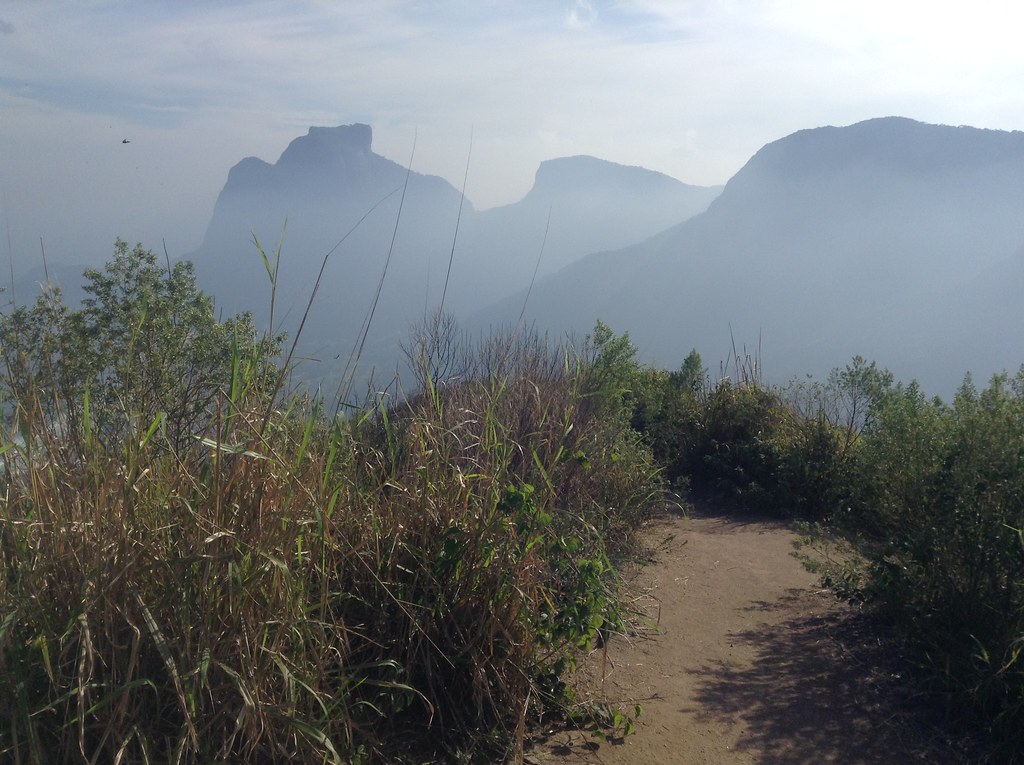
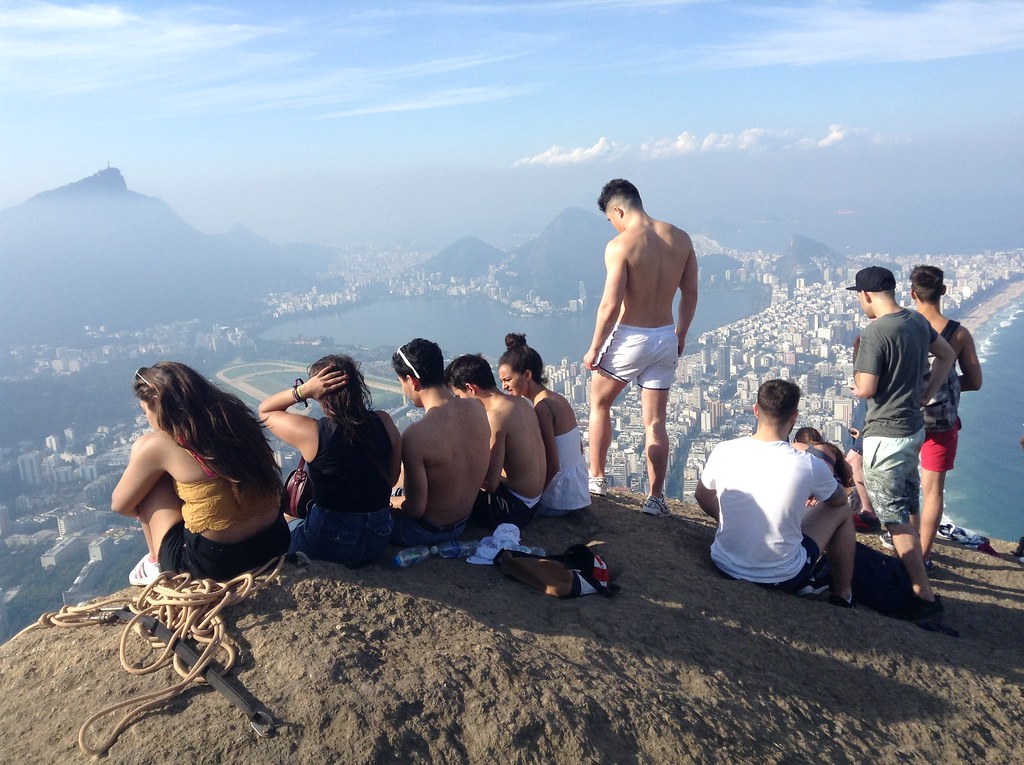
Rio is spectacular because of its mountains, sheer cliffs, and stark hills. Without them, this would be another seaside city. My favorite peak of all is Pão de Açúcar (400 meters/1,300 feet), which juts up life a giant egg from the bay. More than two and 1/2 years ago I first climbed up an easy route Costão, and returning to it now is a bit nostalgic.
Pão de Açúcar is the background of the below photo, which was taken during a three-pitch climb up the nearby Morro da Babilônia.
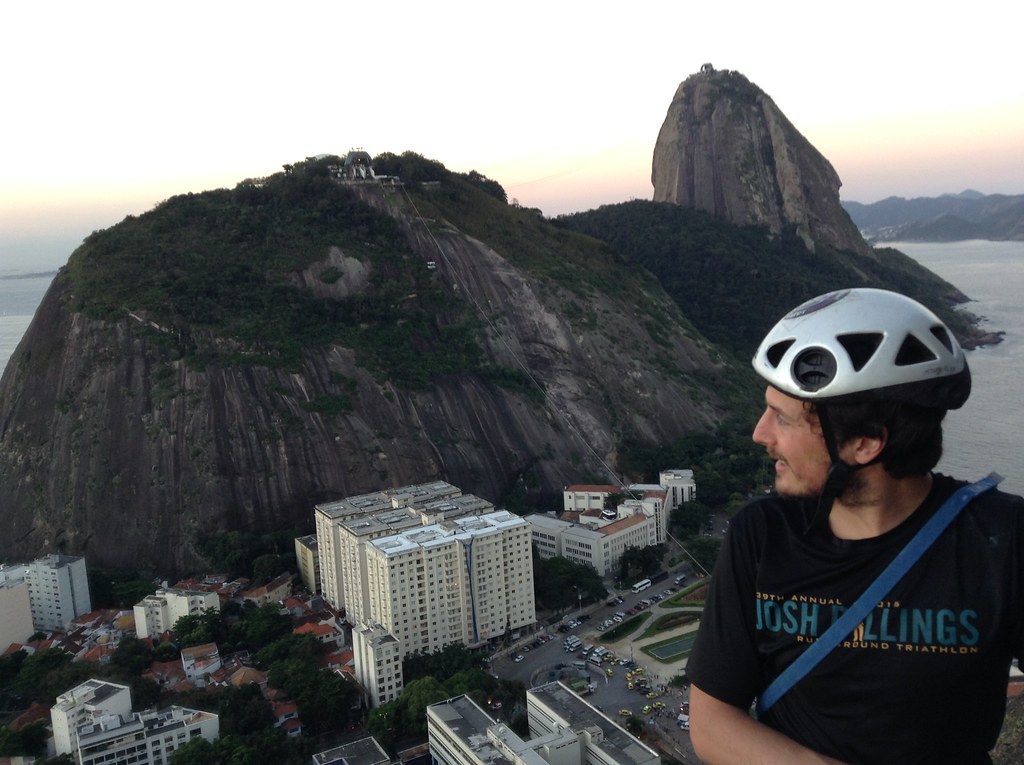

Love the pictures and imagining where the Olympic events will be